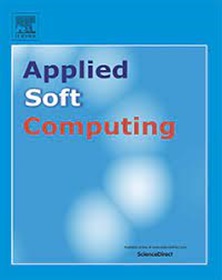Cost optimization strategy for dependent task offloading in vehicular edge computing
IF 7.2
1区 计算机科学
Q1 COMPUTER SCIENCE, ARTIFICIAL INTELLIGENCE
引用次数: 0
Abstract
The geometrically increasing computational demands strain vehicular systems. Vehicular edge computing effectively alleviate this by dividing tasks into sub-modules and offloading these modules to edge servers. However, the interdependence among subtasks makes task offloading and resource allocation highly challenging. To address this issue, we propose a cost optimization strategy for dependent task offloading in vehicular edge computing networks. Specifically, the task offloading process is divided into two sub-problems: task offloading and resource allocation. First, we propose a Sequenced Quantization based on the Recurrent Neural Network (SQ-RNN) algorithm for offloading decisions. This algorithm uses environmental information as the input of the RNN to generate an optimal task offloading strategy. which is then quantified into multiple binary offloading actions through an order-preserving quantization method. Then, we propose a resource allocation method based on Computing Resource Blocks (CRBs), which divides server resources into blocks and assigns them to tasks with the principle of balancing resource allocation and reducing costs. Finally, extensive simulation experiments conducted on real-world datasets demonstrate that our approach reduces computing delay by 15.27% computing energy consumption by 9.93%, and cost by approximately 10.16% on average within the experimental bandwidth range, compared to the baseline algorithm. Moreover, as the number of subtasks increases, the optimization effect becomes more pronounced.
车辆边缘计算中相关任务卸载的成本优化策略
几何增长的计算需求使车辆系统不堪重负。车载边缘计算通过将任务划分为子模块并将这些模块卸载到边缘服务器,有效地缓解了这一问题。然而,子任务之间的相互依赖使得任务卸载和资源分配非常具有挑战性。为了解决这个问题,我们提出了一种车辆边缘计算网络中依赖任务卸载的成本优化策略。具体来说,任务卸载过程分为任务卸载和资源分配两个子问题。首先,我们提出了一种基于递归神经网络(ql - rnn)算法的序列量化卸载决策。该算法使用环境信息作为RNN的输入,生成最优的任务卸载策略。然后通过保序量化方法将其量化为多个二进制卸载动作。在此基础上,提出了一种基于计算资源块(crb)的资源分配方法,该方法将服务器资源划分为块,并以平衡资源分配和降低成本的原则分配给任务。最后,在真实数据集上进行的大量仿真实验表明,与基线算法相比,我们的方法在实验带宽范围内将计算延迟降低了15.27%,计算能耗降低了9.93%,平均成本降低了约10.16%。此外,随着子任务数量的增加,优化效果变得更加明显。
本文章由计算机程序翻译,如有差异,请以英文原文为准。
求助全文
约1分钟内获得全文
求助全文
来源期刊

Applied Soft Computing
工程技术-计算机:跨学科应用
CiteScore
15.80
自引率
6.90%
发文量
874
审稿时长
10.9 months
期刊介绍:
Applied Soft Computing is an international journal promoting an integrated view of soft computing to solve real life problems.The focus is to publish the highest quality research in application and convergence of the areas of Fuzzy Logic, Neural Networks, Evolutionary Computing, Rough Sets and other similar techniques to address real world complexities.
Applied Soft Computing is a rolling publication: articles are published as soon as the editor-in-chief has accepted them. Therefore, the web site will continuously be updated with new articles and the publication time will be short.
 求助内容:
求助内容: 应助结果提醒方式:
应助结果提醒方式:


